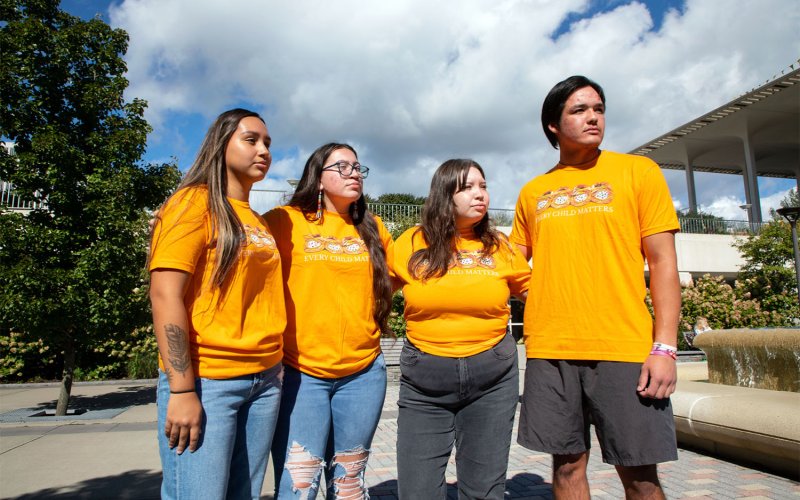Indigenous Students to Host Vigil Honoring Residential School Survivors

By Bethany Bump
ALBANY, N.Y. (Sept. 27, 2022) — The Indigenous Student Association at the University at Albany will host a vigil this Friday in remembrance of the children who died while attending Indian Residential Schools in the U.S. and Canada.
The vigil will also recognize survivors of these schools, which were established by the U.S. and Canadian governments centuries and in some cases decades ago in an attempt to assimilate children whose parents occupied the land prior to European colonization.
Abuse was rampant at many of these schools. In May, a report by the U.S. Interior Department identified more than 50 child burial sites — a number that is expected to grow as investigations continue — across the U.S. that were associated with these schools.
Cassidy Rose Peters, a senior at UAlbany and member of the Onondaga Nation who hails from the Mohawk territory at Akwesasne on the U.S.-Canadian border, has followed news in recent years of mounting body counts from the unmarked burial sites. Members of her family attended Catholic-run day schools, and have shared stories of “heart-wrenching” abuse at the hands of faculty and staff, she said.
“Mohawk was my grandfather’s native language but he was hit with a ruler every time he spoke his language,” she said. “There was just a lot of physical abuse. I was thankful that they made it out alive, but there were many children that didn't.”
While many of these schools had closed by the 1980s and 1990s, their impacts are still being felt generations later.
Jillian Benedict, president of the ISA and a member of the Mohawk Nation at Akwesasne, said she grew up not knowing as much as she would have liked about her culture and ancestral language because the older generations were afraid to pass it on.
“Both my parents went to a day school and they make comments,” she said. “You can tell they aren't expressing exactly what happened to them because of how traumatizing it was.”
Peters said her grandfather was always afraid to teach the language out of fear for his children’s safety.
“I think that's just how it is with our culture,” she said. “It’s almost like we're disconnected from it a little bit and this club is a way of us bringing it back and trying to just have each other's backs.”
The group formed in March and has about eight to nine members so far, they said. They’re hoping to get the word out and recruit new members ahead of the vigil Friday. The students will have an educational table set up in the Campus Center near the "bean" conference room from 11 a.m. to 2 p.m. Friday, with a vigil planned for 6:30 p.m. at the Parents Fountain.
Members plan to read the “Thanksgiving Address,” a prayer delivered by the Haudenosaunee confederacy at the opening and closing of events that gives thanks to the Earth and natural wonders of the universe.
Their goal for the vigil is to raise awareness of the atrocities committed at residential schools, which remain under investigation by both the U.S. and Canadian governments.
“It’s to bring awareness and to honor the survivors,” Peters said. “These were children — somebody’s family member. It needs to be talked about and it just feels like history has swept it under the rug, and I guess we're just trying to be their voices.”
They also hope to address the issue of visibility for indigenous people.
“Indigenous people are still here and trying to thrive,” Benedict said. “I know a lot of people who are like, ‘I've never met a real Native American or who just don't know that reservations exist, but we are not a people of the past. I think that is a big misconception that we are hoping to correct.”
The University at Albany’s campuses are located on the traditional lands of the Mohawk Haudenosaunee and Stockbridge-Munsee Band of Mohicans.




